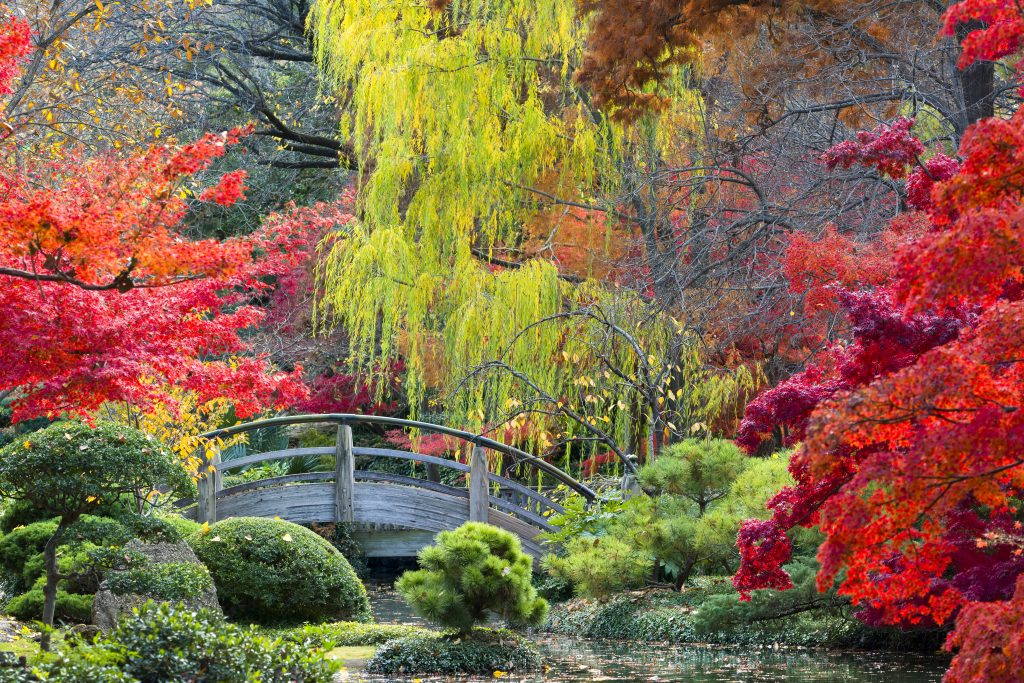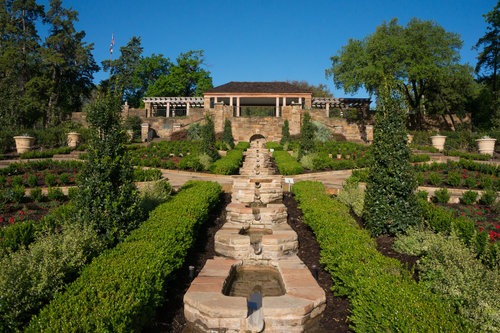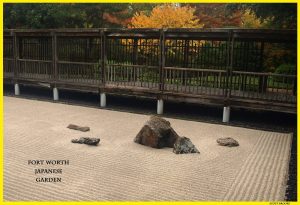This year, guests to the Botanic Garden will notice construction work underway as we embark on several major projects, thanks to the support of the City of Fort Worth and many generous donors. Here’s a rundown of what we have planned for 2022.

Old Garden Road has long served as a primary service route between the Garden Center and the historic Rock Springs Building; it connects the newer, northern sections of the garden with the southern, historic sections of the campus. A $1.3 million dollar renovation will convert Old Garden Road from a vehicular roadway to a generous 20-foot-wide pedestrian walk. Native and ornamental plantings, landscape boulders, ornamental curbs, benches and custom lighting inspired by the traditional WPA-era architecture of older sections of the Garden will complement new paving of native stone and finished concrete.
The Full Moon Bridge in the Japanese Garden is one of the most recognized features of the Garden. Under the guiding expertise of David Sipos, a master carpenter and expert in Japanese woodworking, the current structure will be fully replaced with a new version utilizing traditional Japanese joinery and weatherization techniques. The foundation will be improved and reinforced, and the original brass rail and finials will be retained and replaced on the new structure.
The Tea House in the Japanese Garden will be given a major facelift by Japanese garden expert John Powell. (Read an interview with Powell about his training in Japan and work at other Japanese gardens.) Improvements will include a tokonoma, the ceremonial niche for scrolls, floral arrangements and art pieces often included in traditional tea events. A new preparation area, improved lighting, traditional screens and furniture will also be added. Traditional Japanese stucco will be applied to the inside and outside walls of the teahouse, and improvements and repairs will be made to the exterior wood trim.

The Rose Ramp Shelter House, a key feature of the original Garden, will have the foundations of the surrounding retaining walls stabilized. Additional renovations to trellises and other elements are also planned to protect this important part of the Garden’s history.
“We are excited to get these projects started,” says Executive Vice President Bob Byers. “Any inconvenience from construction will be more than made up by the years of enjoyment these completed projects will bring to guests.”
Tips on Planning Your Garden Improvements
Many gardeners use the winter to plan their own garden improvements and new flower beds in particular. If you are considering adding a new garden bed, keep mind the following tips from senior horticulturist Steve Huddleston:
Start with the soil. Evaluate the area you have in mind and consider the health of the soil. Is it compacted and depleted? Or rich with organic matter? You can have your soil evaluated by your county’s agricultural extension office (Tarrant County residents can learn more here.) You can also learn more by taking our Soil Building and Health class.
Consider the location. Study the site of your new flower bed during different times of day. How much light will the bed receive, and when? Remember that conditions will be different as the seasons change, so take into account the movement of the sun and the leafing out of trees and shrubs. Sketch out your bed so you can visualize your space.
Select your flowers. This is the fun part! You’ll want to pick plants that will do well with your light exposure and that will thrive in our climate. You can get lists of plants that do well in our area from numerous sources, including the archives of the FWBG | BRIT newsletter. You can also search online and consider recommendations from knowledgeable sources such as Texas A&M; for example, its Superstar Plants have been tested and proven to be well-suited to the Texas climate. Ask yourself if you want primarily annuals, which will need to be replaced regularly, or perennials, which return every year. Think about the shapes, colors and textures of plants. Do you want a monochromatic palette or lots of contrast?
Maintenance. As you plan your flower bed, think about how much maintenance your flowers will demand. Some flowers required old blooms to be removed to look their best and produce new flowers; other require very little “deadheading.” Ask yourself how much time you will be able to devote to maintenance, but know that at least some weeding and trimming are required for any garden. You should also plan how you intend to water your flowers. Do you have an irrigation system, or do you need to add one?
February may be a quiet time in the garden, but it is not a dull time for gardeners, who can dream out new beds and new combinations of flowers all winter long.






